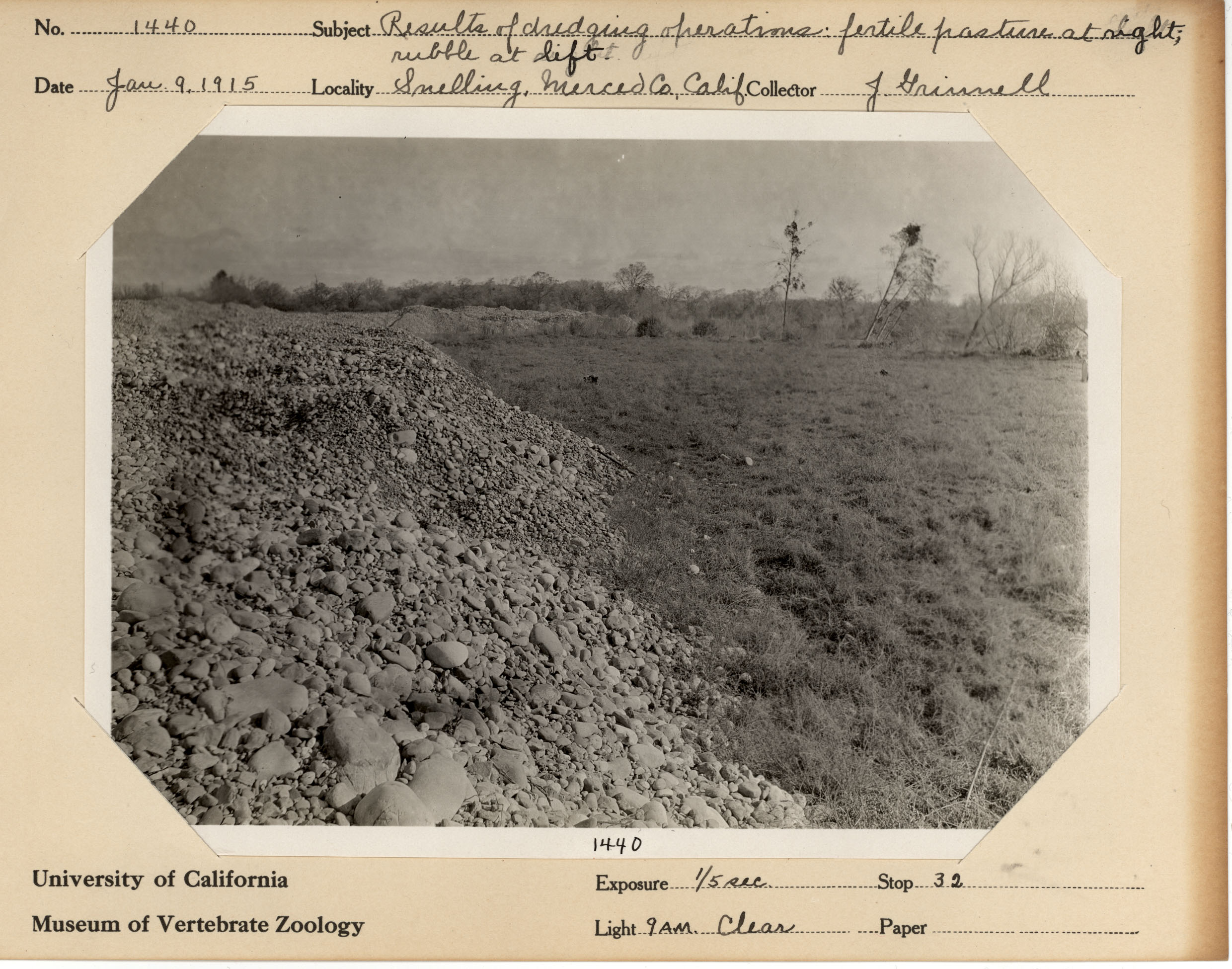Mary McDonnell is a sophomore majoring in Conservation and Resource Studies.

By being a part of the College of Natural Resources, the majority of my classes entail learning dark details of the world’s declining environmental state. Statistics, graphs, and charts visually aide my understanding of the human population’s deep and wide footprint. Often, it is easy to think of environmentalism as a relatively new concept, born out of the 70’s with the Green Revolution and bell-bottomed jeans. This image captured by Joseph Grinnell in 1915, challenges the misconception that the wellness of the environment is a new concern.
In the description of the photo, Grinnell writes, “Results of dredging operations. Fertile pasture at right, rubble at [left]”. Dredging is a type of mining that scoops out the bottom of rivers, harbors or lakes with a dredge. Today, dredging is implemented to clear out the build up of sediment in rivers. Historically, it was a method practiced widely in California during the Gold Rush to retrieve fine gold from sediment. Grinnell photographed the town of Snelling, which was a major dredge field at the time near the Merced River.
It is possible that Grinnell was simply making an observation of his surroundings without the thought of environmental impact of dredging at the forefront of his mind. However, the way he frames the photograph, juxtaposing the piling rubble and the fertile pasture, tempts one to think that Grinnell was discontent with the encroaching, out of context, rubble that swallowed up part of the pastureland.
This image is a great example of how to frame the consequences of human action on the environment, in a way that captures both the negative impacts, the rubble, and the potential for conservation and renewal, the fertile pasture.
